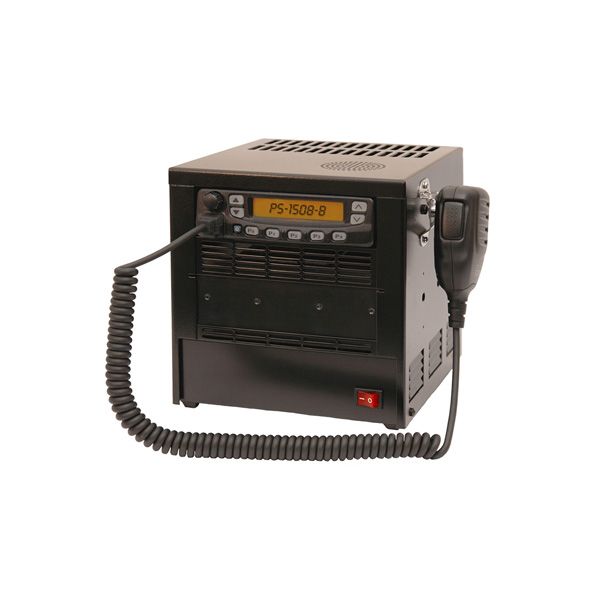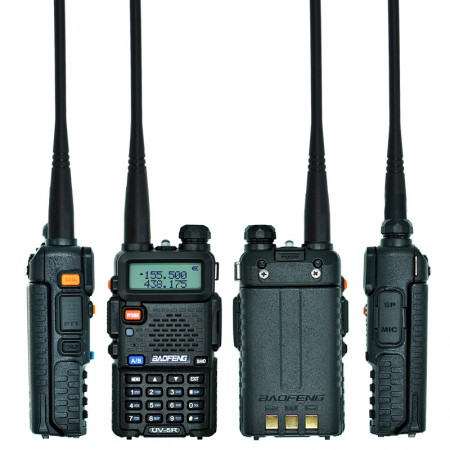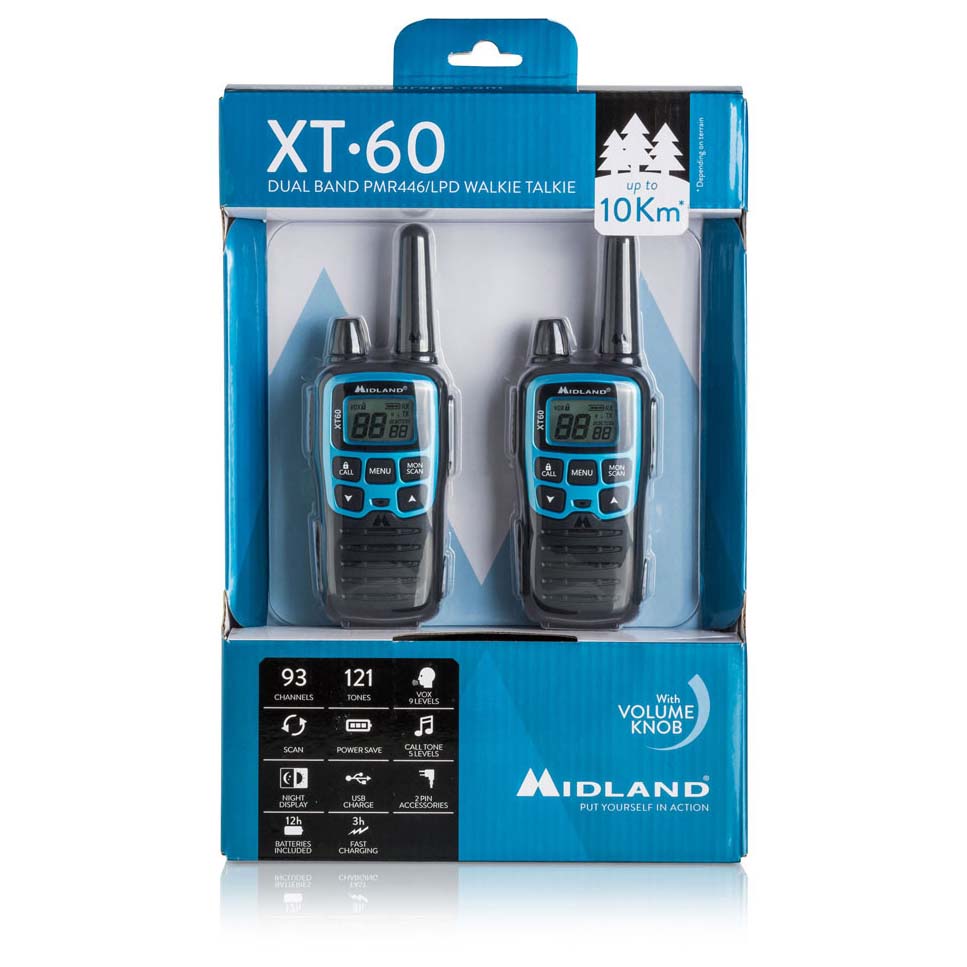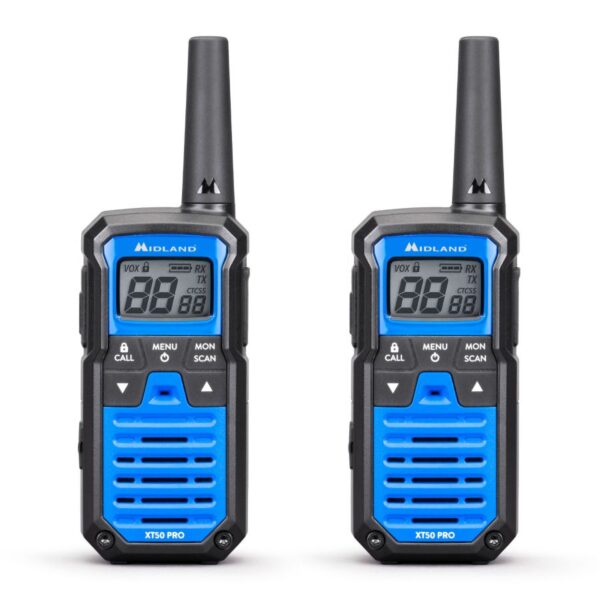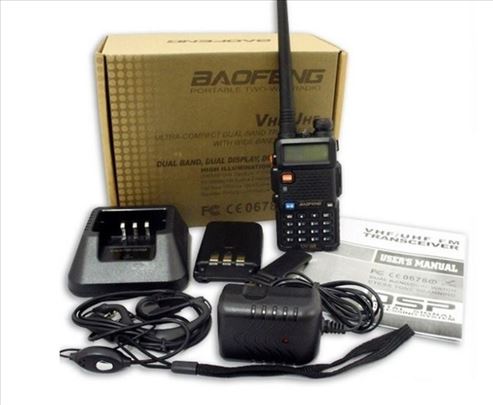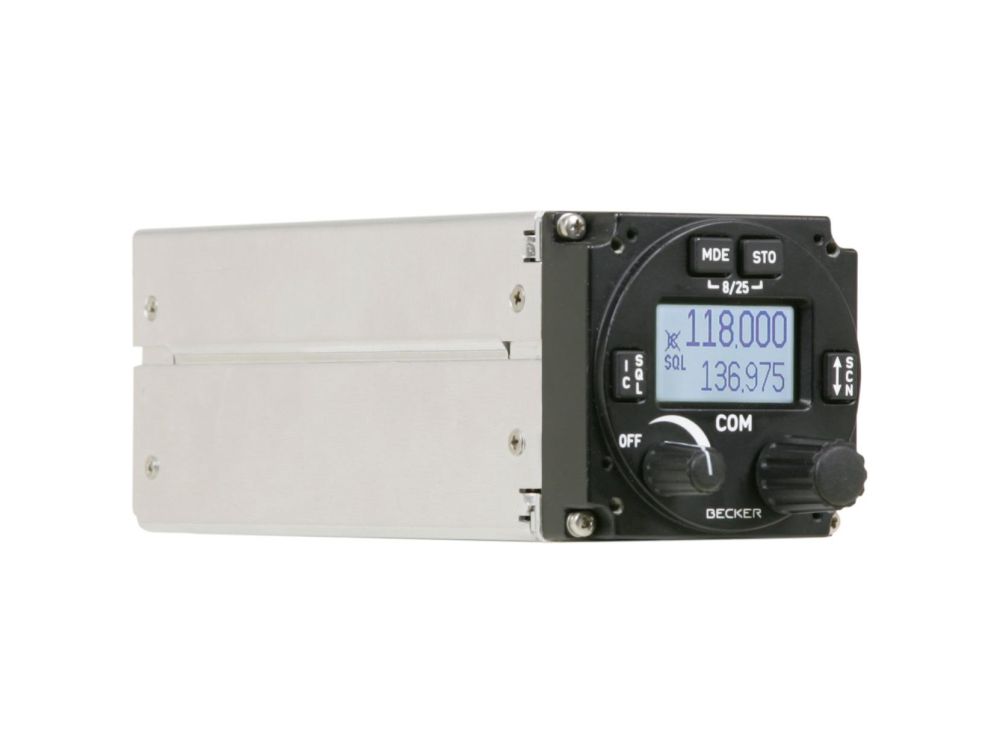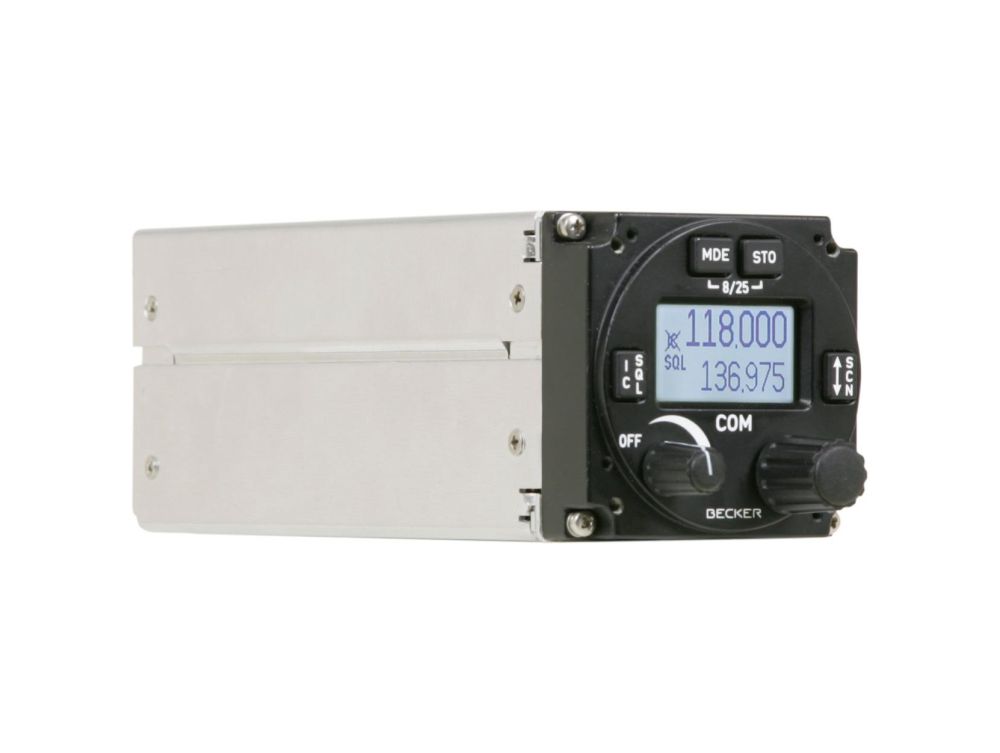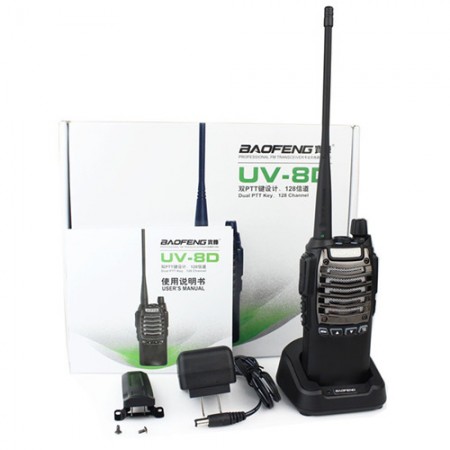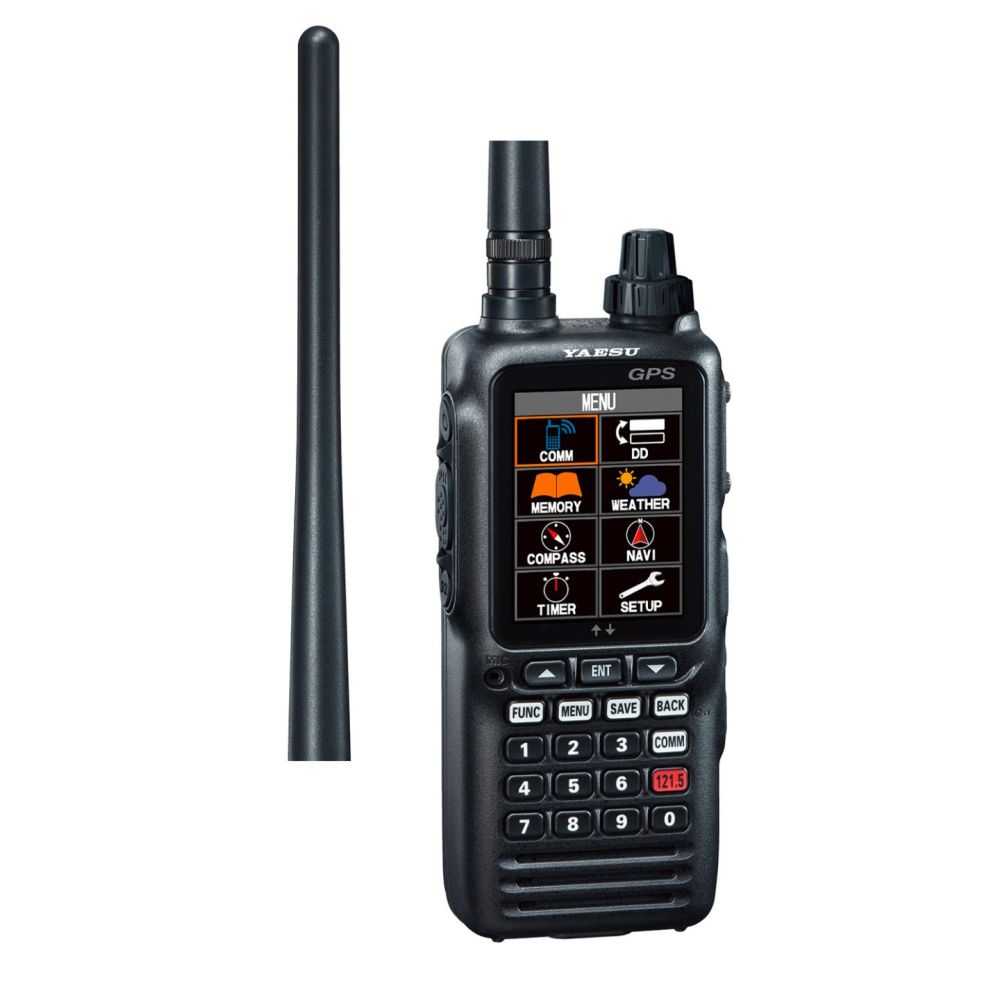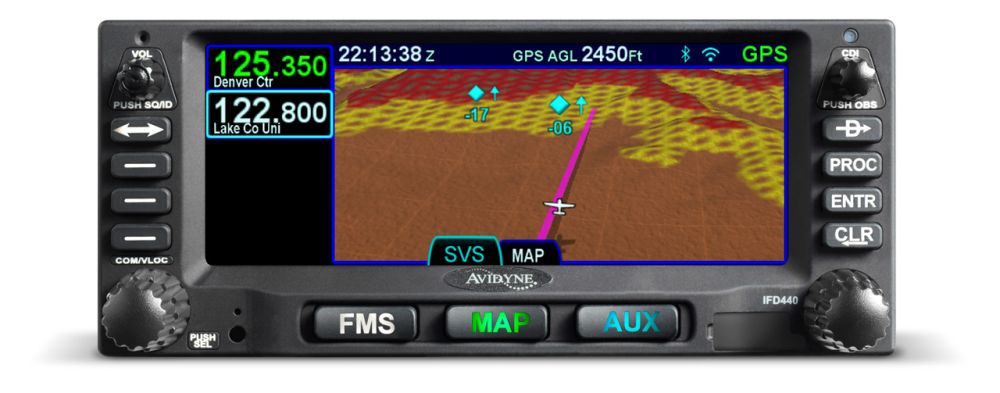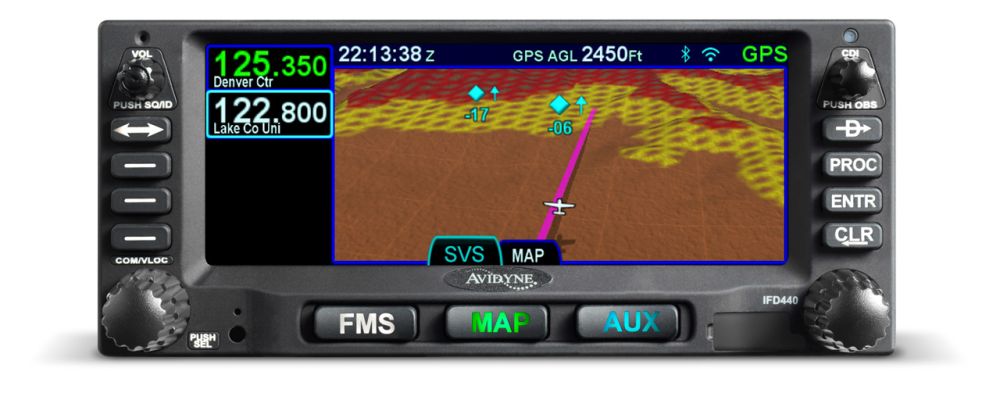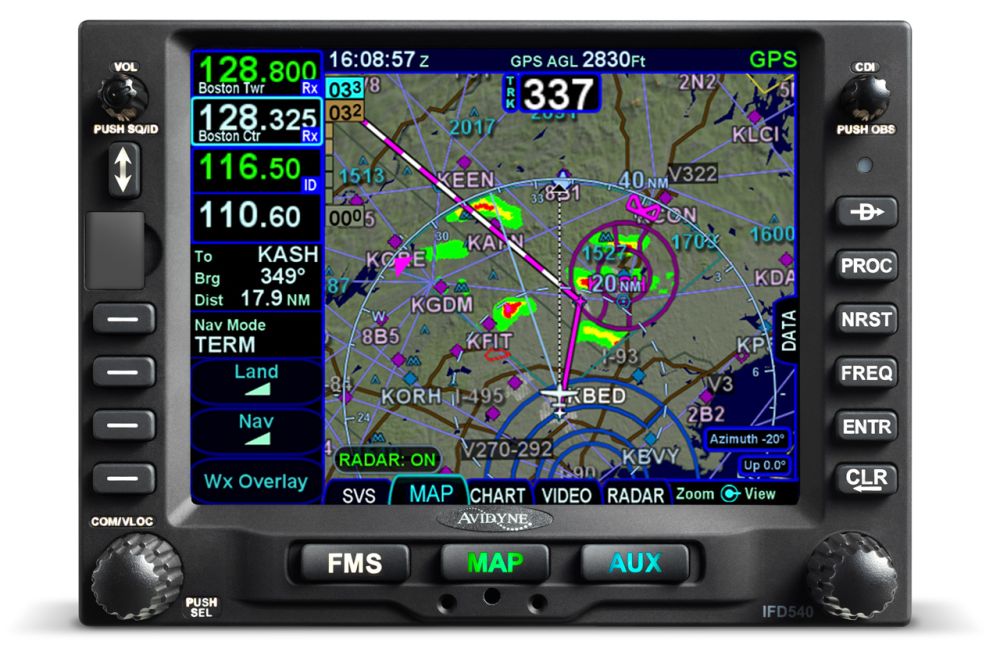Pratite promene cene putem maila
- Da bi dobijali obaveštenja o promeni cene potrebno je da kliknete Prati oglas dugme koje se nalazi na dnu svakog oglasa i unesete Vašu mail adresu.
1-17 od 17 rezultata
Broj oglasa
Prikaz
1-17 od 17
1-17 od 17 rezultata
Prikaz
Prati pretragu "tx rx"
Vi se opustite, Gogi će Vas obavestiti kad pronađe nove oglase za tražene ključne reči.
Gogi će vas obavestiti kada pronađe nove oglase.
Režim promene aktivan!
Upravo ste u režimu promene sačuvane pretrage za frazu .
Možete da promenite frazu ili filtere i sačuvate trenutno stanje
PS-1508B Battery Back-up version of PS-1508 Power Supply The PS1508B is supplied with a pair of 7Ahr Lead Acid Batteries installed, giving a maximum of 14Ahr back up in the event of mains failure (see duty cycles below). The PS1508B will automatically switch between battery and PSU dependant on the presence of the mains supply. This provides you with uninterrupted use in the event of a power cut. The batteries will automatically recharge and the unit will switch back to AC operation when the mains supply is restored. The Base Station Battery Back-up is ideal for any organisation that relies on continual radio communications. This unit could also provide your customers with the possibility of a portable solution for special events etc. Duty Cycle information (guide only) • A duty cycle of 10% TX, 10 % RX and 80%. Standby gives battery backup of over 12 hours* use upon the mains failing (from fully charged). • A duty cycle of 5% TX, 5% RX and 90%. Standby gives battery backup of over 20 hours* use upon the mains failing (from fully charged). *Based on the following typical radio specs: TX: 7Amps, RX: 1.2Amps & Standby: 0.3Amps. Batteries should charge from flat within 5hrs
Vrhunske radio stanice baofeng uv5-r koja poseduje displej Domet do 5km Specifikacije: Color: Black Model: New BAOFENG UV-5RA Frequency Range: 65-108MHz (FM Receive only) 136-174MHZ and 400-520HZ (TX/RX) Channel Number: 128 Frequency Stability: ±2.5ppm Antenna: High Gain Dual Band Antenna Antenna Impedance: 50 Operating Voltage: DC 7.4V Mode of operation: Simple or semi-duplex Dimension (W x H x D): 100 x 52 x 32 mm Weight: 250g (including battery, antenna) Transmitter Output power: 4W / 1W (Max 5W) Modulation Mode: 16k F3E / 11k F3E
Moguće lično preuzimanje na Novom Beogradu ili u centru grada Vrhunske radio stanice baofeng uv5-r Cena 3000dinara po komadu Dva komada 6000dinara Domet od 2 do 5km Specifications Color: Black Model: New BAOFENG UV-5R Frequency Range: 65-108MHz (FM Receive only) 136-174MHZ and 400-520HZ (TX/RX) Channel Number: 128 Frequency Stability: ±2.5ppm Antenna: High Gain Dual Band Antenna Antenna Impedance: 50 Operating Voltage: DC 7.4V Mode of operation: Simple or semi-duplex Dimension (W x H x D): 100 x 52 x 32 mm Weight: 250g (including battery, antenna) Transmitter Output power: 4W / 1W (Max 5W) Modulation Mode: 16k F3E / 11k F3E
Domet: 10km Frekvencija PMR446: 446.00625 – 446.09375 MHz Kanali 24 PMR446 (8+16 pre-programiranih) + 69 LPD Tonovi 38 CTCSS i 83 DCS tonova u TX and RX Izlazna snaga 10 or 500 mW (može da se izabere) Displej LCD displej sa pozadinskim osvetljenjem Napajanje 700mAh punjiva ( dolaze u kompletu ) ili 3x AAA type 4.5V(Alkaline) VOX Emitovanje poziva bez pritiskanja tastera Garancija 24 meseca
Radio stanica ( Toki-Voki ), namenjena lovcima ili ljubiteljima prirode. Domet: 12km Frekvencija PMR446: 446.00625 – 446.09375 MHz Kanali 24 PMR446 (8+16 pre-programiranih) + 69 LPD Tonovi 38 CTCSS i 83 DCS tonova u TX and RX Izlazna snaga 10 or 500 mW (može da se izabere) Displej LCD displej sa pozadinskim osvetljenjem Napajanje 1000mAh punjiva ( dolaze u kompletu ) ili 3x AA type 4.5V(Alkaline) VOX Emitovanje poziva bez pritiskanja tastera Baby Sitter funkcija Garancija 24 meseca
Original Baofeng, novo sa garancijom na ispravnost Specifications Color: Black Model: New BAOFENG UV-5R Frequency Range: 65-108MHz (FM Receive only) 136-174MHZ and 400-520HZ (TX/RX) Channel Number: 128 Frequency Stability: ±2.5ppm Antenna: High Gain Dual Band Antenna Antenna Impedance: 50 Operating Voltage: DC 7.4V Mode of operation: Simple or semi-duplex Dimension (W x H x D): 100 x 52 x 32 mm Weight: 250g (including battery, antenna) Transmitter Output power: 4W / 1W (Max 5W) Modulation Mode: 16k F3E / 11k F3E Maximum deviation: <5kHz(Wide) / <2.5kHz(Narrow) Current: < =1.6A(5W) CTCSS/DCS deviation: 0.5±0.1kHz(Wide) / 0.3±0.1kHz(Narrow) Intermediation sensitivity: 8-12mv Intermediation distortion: <10% Jedna od najacih radio stanica TOKI VOKI marke Baofeng UV-5R * Jedna od najacih radio stanica Toki Voki dometa do 5km * Potpuno nova i neotpakovana * Moze da se upari Vise radio stanica ( ovog tipa ) * Kodiranje kanala * Veliki izbor kanala 128 razlicitih kana
Težina: 94g Skeniranje: da Tonovi:38 CTCSS tonova u TX i RX i 83 DCS tona Kanali:85 kanala: 69 LPD + 16 PMR446 Kućište: ABS Prikaz: Displej od tečnih kristala sa pozadinskim osvetljenjem Frekvencija: Dvopojasni LPD/PMR446 primopredajnik Domet do 8 km u optimalnim uslovima Vodootporan:IPX2 Napajanje:Baterija Auto Power Save: da Dimenzija VxŠxD 102x49x30 mm Pakovanje sadrži: 2 x XT50 Pro radio stanica 2 x kopča za kaiš 2 x Baterija 700 mAh 1 x USB kabl Midland poboljšava XT liniju izvrsnosti i čini je PROfessionalnom. Šta to znači? Više funkcija, bolje performanse i veća bezbednost. XT50 PRO značajno proširuje svoje performanse sa širim frekventnim opsegom, 121 podton, 6 vox nivoa, IPX2 nivo vodootpornosti, RRM specijalni kanal. (Rete Radio Montana): glavni alat za prijavljivanje hitnih slučajeva.XT50 PRO održava komunikaciju na udaljenosti do 8 km u optimalnim uslovima, lakoćom korišćenja koja razlikuje celu XT liniju i svim već prisutnim karakteristikama. VOX: da Poziv: da Težina: 94g Skeniranje: da Tonovi: 38 CTCSS tonova u TX i RX i 83 DCS tona Kanali: 85 kanala: 69 LPD + 16 PMR446 Kućište: ABS Prikaz: Displej od tečnih kristala sa pozadinskim osvetljenjem Frekvencija: Dvopojasni LPD/PMR446 primopredajnik Roger Beep:da Vodootporan:IPX2 Napajanje:Baterija Auto Power Save: da Zaključavanje tastature: da Tip utičnice za dodatnu opremu: 2 Pin Midland Dimenzija VxŠxD 102x49x30 mm Izlazna snaga 500mV ERP (PMR446); 10 mV ERP (LPD) Pakovanje sadrži: 2 x XT50 Pro radio stanica 2 x kopča za kaiš 2 x Baterija 700 mAh 1 x USB kabl
Original Baofeng, novo sa garancijom na ispravnost Specifications Color: Black Model: New BAOFENG UV-5R Frequency Range: 65-108MHz (FM Receive only) 136-174MHZ and 400-520HZ (TX/RX) Channel Number: 128 Frequency Stability: ±2.5ppm Antenna: High Gain Dual Band Antenna Antenna Impedance: 50 Operating Voltage: DC 7.4V Mode of operation: Simple or semi-duplex Dimension (W x H x D): 100 x 52 x 32 mm Weight: 250g (including battery, antenna) Transmitter Output power: 4W / 1W (Max 5W) Modulation Mode: 16k F3E / 11k F3E Maximum deviation: <5kHz(Wide) / <2.5kHz(Narrow) Current: < =1.6A(5W) CTCSS/DCS deviation: 0.5±0.1kHz(Wide) / 0.3±0.1kHz(Narrow) Intermediation sensitivity: 8-12mv Intermediation distortion: <10% Jedna od najacih radio stanica TOKI VOKI marke Baofeng UV-5R * Jedna od najacih radio stanica Toki Voki dometa do 5km * Potpuno nova i neotpakovana * Moze da se upari Vise radio stanica ( ovog tipa ) * Kodiranje kanala * Veliki izbor kanala 128 razlicitih kanala ( za razliku od jeftiniji modela koji imaju po samo nekoliko kanala ovaj model ima veliki izbor kanala ) * Jedini Toki Voki koji radi na niskim frekvencijama * JACINA 5W
Becker - GT6201-05 - VHF/AM Transceiver - 118-137 MHz - 25/8,33 KHz - 6W in accordance with ETSI EN 300676
With a smart and compact format, the GT6201 single block VHF radio is the ideal solution for air traffic control towers looking for a cost-efficient main or backup radio to be integrated into existing ATC desks or consoles. Avaible also with a specific mounting kit for vehicle integrations. Air traffic services require efficient, secure, modern and user friendly communication equipment. Becker offers ideal solutions for small to medium-sized airports, airfields or airline offices. Assembled with quality-proven components, engineered with state-of-the-art technology and driven by a customer-centric philosophy, our radio-communication solutions are meant to be flexible and scalable. In continuation of the very successful portable/mobile VHF transceiver Becker AR4201, the GT6201 VHF Transceiver offers latest standards and is ideally suited for vehicle or control tower installations. Designed for operations at airfields and airports in a very demanding environment, the GT6201 offers latest technology and support all frequency channels in the aeronautical frequency range, adjustable in 25 kHz steps as well as in 8,33 kHz steps. With an output power of 6W or 10W, the transmitter is strong enough for medium range communications, ensuring a low cost of ownership for the customer. Derived from the AR6201, its airborne counterpart, the GT6201 is the robust, reliable and flexible solution for your airport operations. - Reduced installation footprint - Low weight - Robust and field-proven design - No forced cooling - No ventilation slots - Maintenance-free - User-friendly HMI - Large, clear and dazzle-free LCD display - Extensive setup possibilities - Vehicle mounting kit available FEATURES 6 W or 10 W RF-power variants Power supply: 10-30 VDC or 12/24 VDC battery Dual scan function (monitoring two frequencies during TX/RX) Channel spacing: 25 and 8.33 kHz Frequency range: 118.000-136.990 MHz Selectable and adjustable squelch levels Parameter setting via user menu 99 free editable memory channels Non-volatile memory Emergency mode 4 fully configurable audio outputs Compliant with ETSI standards and type approved for ATM applications
Becker - GT6201-05 - VHF/AM Transceiver - 118-137 MHz - 25/8,33 KHz - 6W in accordance with ETSI EN 300676
With a smart and compact format, the GT6201 single block VHF radio is the ideal solution for air traffic control towers looking for a cost-efficient main or backup radio to be integrated into existing ATC desks or consoles. Avaible also with a specific mounting kit for vehicle integrations. Air traffic services require efficient, secure, modern and user friendly communication equipment. Becker offers ideal solutions for small to medium-sized airports, airfields or airline offices. Assembled with quality-proven components, engineered with state-of-the-art technology and driven by a customer-centric philosophy, our radio-communication solutions are meant to be flexible and scalable. In continuation of the very successful portable/mobile VHF transceiver Becker AR4201, the GT6201 VHF Transceiver offers latest standards and is ideally suited for vehicle or control tower installations. Designed for operations at airfields and airports in a very demanding environment, the GT6201 offers latest technology and support all frequency channels in the aeronautical frequency range, adjustable in 25 kHz steps as well as in 8,33 kHz steps. With an output power of 6W or 10W, the transmitter is strong enough for medium range communications, ensuring a low cost of ownership for the customer. Derived from the AR6201, its airborne counterpart, the GT6201 is the robust, reliable and flexible solution for your airport operations. - Reduced installation footprint - Low weight - Robust and field-proven design - No forced cooling - No ventilation slots - Maintenance-free - User-friendly HMI - Large, clear and dazzle-free LCD display - Extensive setup possibilities - Vehicle mounting kit available FEATURES 6 W or 10 W RF-power variants Power supply: 10-30 VDC or 12/24 VDC battery Dual scan function (monitoring two frequencies during TX/RX) Channel spacing: 25 and 8.33 kHz Frequency range: 118.000-136.990 MHz Selectable and adjustable squelch levels Parameter setting via user menu 99 free editable memory channels Non-volatile memory Emergency mode 4 fully configurable audio outputs Compliant with ETSI standards and type approved for ATM applications
-Odlicna radio stanica Pakovanje sadrzi Baofeng UV-8d Baterija 2800mah Punjac Stalak Snala za Kacenje Antena Upustvo na engleskom Spakovano u originalnom kutijom Domet do 20 km u zavisnosti od konfiguracije terena. Specifikacija : Product Name FM Radio Model UV-8D Power 8W Supply Voltage Rechargeable 7.4V 2800mAh Lithium-ion Frequency Range 65MHz-108MHz(Only commercial FM radio reception) UHF: 400-520MHz(Rx/Tx) Mode of Operation Simplex or semi-duplex Memory Channels 128 Channels Frequency Stability 2.5ppm Antenna Impedance 50 Ohms Consumption In Standby < =75mA Consumption In Reception 380mA Consumption In Transmission < =1.4A Main Material Plastic, Electronic Parts Main Color Black Opis : -Two-way handheld transceiver. -DTMF encoded. -2800mAh Lithium-ion battery with high capacity. -Commercial FM radio receiver (65MHz-108MHz). -Alarm function. -Up to 128 memory channels. -Dual PTT Key -CTCSS/ DCS -DTMF Code -LED Flashlight -Dual PTT Key -Dual Watch -Emergency Alarm -PC Programming -Cable replication -Call Tone 1750Hz -High/low voltage warning -Busy channel lockout -Scan -Dual standby channels Receive prompt function
Download: Yaesu - FTA-850L TDS Introducing the Yaesu FTA-850L portable airband transceiver, precisely engineered to meet the requirements of top aviators. Boasting top tier features like a 2.4" full-color TFT display, enhanced navigation features using ILS, VOR, or GPS, and a 400 channel memory bank. Forget the wires, featuring a Built-in Bluetooth module allowing operation with a commercially available Bluetooth headset, or use with Yaesu's optional SSM-BT10 headset. Built around an ultra-durable polycarbonate housing, the FTA-850L meets the IPX-5 water proof rating, and the stringent MIL-STD-810H standards. Packaged with a high capacity 2200mAh Lithium-Ion battery, Headset adapter, 100-240VAC charger, 12VDC charger/Power cable, drop in charging cradle, backup Alkaline battery tray, and heavy duty belt clip. All backed by an industry leading 3 year waterproof warranty. Features ILS Navigation (Localizer and Glide Slope) When the FTA-850L receives an ILS signal, the display will automatically switch to the NAV band screen which shows a CDI (Course Deviation Indicator) based on the received localizer signal or the glide slope signal. Course and height deviation are clearly presented on the color CDI display, and aid with the landing approach under bad weather conditions. VOR Navigation When the FTA-850L receives a VOR signal, the display automatically switches to the NAV band screen and shows the CDI. The top of the compass rose always indicates the direction set as the OBS. The SOG (Speed Over Ground) is displayed only when the FTA-850L internal GPS unit is activated and a fix is acquired. Flight-Route Display and Navigation The Flight Route Navigation feature clearly presents the traveling route, listing the waypoints from the departure point to the final destination, including the current position where Navigation is being performed. Route, Location and travel status can be assessed at a glance. Navigation is also displayed on an easy-to-read color compass screen. Dual Frequency Display DD (Dual Frequency Display) screen presents two frequencies separately on the top and bottom of the screen. The most recently tuned information (Comm Frequency, Memory group and Weather channel) are always set into the active channel automatically. the target mode and channel can easily be switched between different modes using the DD screen, without going through the MENU. Specifications - Frequency Ranges: RX 108.000 to 136.9916 MHz (NAV and COM) / 161.650 to 163.275 MHz (Weather Channels) / 329.150 to 335.000 MHz (Glide Slope) / TX 118.000 to 136.9916 MHz - Channel Spacing: 25 kHz/8.33 kHz - Emission Type: TX: AM RX: AM & FM - RF Power Output: 6.0 W (PEP), 1.8 W (Carrier Power) - Water Protection Rating: IPX5 - GPS Receiver Channels: 66 Channels - Case Size(W x H x D): 2.4" x 5.2" x 1.3" (60 x 132 x 34 mm) w/ SBR-39LI, w/o Knob & Antenna - Weight: 13.9 oz (395 g) w/ SBR-39LI, Antenna and Belt Clip Benefits - Oversized 2.4" TFT Color Display (240 x 320 pixel) - Dual Frequency Display - Wireless Bluetooth operation - ILS Navigation Display (localizer and Glide Slope) - VOR Navigation Display - Integrated 66 Channel WAAS GPS Receiver - Waypoint Navigation - 8.33 kHz Narrow Band Compatible - NOAA Weather Channel Receive - NOAA Weather Alert - 400 Memory Channels with 14 Character Alphanumeric Tags - Water Protection - IPX5 Rating - Rugged Construction: Certified to MIL-STD-810H - Loud Audio Output - PC Programmable (USB Cable Included) In The Box - Antenna (SRA-20A) - Li-Ion Battery Pack (SBR-39LI 7.2V, 2200 mAh) - Belt Clip (SHB-11) - AC Charger (SAD-25) - Charger Cradle (SBH-11) - Cigarette Lighter DC/DC Converter (SDD-12) - Headset Adapter Cable (SCU-42) - Alkaline Battery Tray (SBT-12 : AA x 6) - USB Cable (T9101648) - Operating Manual - Warranty Card
The SV-GPS-2020 GPS Receiver/Antenna lets new and existing SkyView customers add a 2020-compliant GPS position source for ADS-B Out. As a drop-in replacement for the SV-GPS-250 receiver, owners of earlier systems do not need to run any additional wires, coax, or install any new boxes in their aircraft. When combined with Dynon's SV-XPNDR-261 Mode-S transponder, SkyView customers meet all the transponder and ADS-B Out requirements. Pilots can also add theSV-ADSB-472 Traffic and Weather Receiver for the best-possible situational awareness in their aircraft. The SV-GPS-250 is a sensitive, WAAS enabled GPS receiver and antenna. The advantage of having the receiver packaged in one unit with the antenna, is that the output is a standard NMEA serial connection. A shielded antenna cable, with its inherent attenuation of signal and greater difficulty of routing, is not required to connect to the SkyView Display. SkyView GPS Receiver: The SV-GPS-2020 is a sensitive, WAAS enabled GPS receiver and antenna. The advantage of having the receiver packaged in one unit with the antenna, is that the output is a standard NMEA serial connection. A shielded antenna cable, with its inherent attenuation of signal and greater difficulty of routing, is not required to connect to the SkyView Display. GPS Data: GPS latitude/longitude data is necessary for the SkyView to locate its position to display Synthetic Vision and the Moving Map. It is also necessary during calibration of the Remote Compass/Magnetometer, in order for SkyView to determine current location and the correct magnetic inclination. Redundancy: An SV-GPS-250 is not necessary but highly recommended for the SkyView System. As a backup, NMEA standard GPS input can be utilized from a third party GPS receiver, but most GPS units output updates at 1/second, not 5/second like the SV-GPS-250 does. Another major advantage of the SV-GPS-250 is that it derives its power from a SkyView Display Backup Battery. So in the event of loss of ship's power the GPS will continue to be powered. Another advantage is the SV-GPS-250 is designed to be used with SkyView, and no setup is required. Choosing the right GPS: US customers that are planning to equip their aircraft for compliance with the FAA's 2020 ADS-B Out mandate should install an SV-GPS-2020 as their primary GPS. US customers that use an SV-GPS-2020 can utilize a second SV-GPS-250 as a position source backup. At this time, Dynon does not make any claims about the SV-GPS-2020's applicability or useabillity outside of the US to satisfy ADS-B Out or other requirements. Therefore, non-US customers will generally equip with the SV-GPS-250. Each SV-GPS-250 contains: Four leads to attach to the SkyView Main Harness, including RX, TX, 8V, and Ground.
As the heart of your ADS-B system, Avidyne’s IFD Series features the most intuitive Flight Management System in an easy-to-use, yet powerful design. The Easy Choice Avidyne’s IFD Series of touch screen navigators represent the next generation in flight management systems. Each provides SBAS/LPV precision navigation and are designed to meet the accuracy and integrity requirements for ADS-B as part of the NextGen airspace initiative. As direct replacements for legacy systems, the IFDs each share the same basic functionality in large and compact display formats respectively. When it comes to panel-mounted avionics, you now have a choice and the choice is easy. Avidyne. Shown left, from top to bottom: AMX240 Audio Panel, IFD540, IFD440, AXP340 Transponder, DFC90 Digital Autopilot. Direct Replacements The IFDs are direct replacements for popular Garmin GNS Series Navigators. In most cases, the IFDs can utilize the existing tray and connectors, and are compatible with all the popular interface configurations, which can greatly minimize installation costs. Hybrid Touch: Knobs & Buttons or Touch-Screen The award-winning Page & Tab user interface eliminates nested menus, allowing you to go to any page in the system with only one or two clicks. In addition to the dedicated knobs and buttons that many pilots prefer for frequent pilot actions, the IFDs Hybrid Touch capability allows pilots to perform virtually all of those same functions via the touch screen interface. Additionally, the IFDs offer MultiTouch functionalities such as pinch-zoom, map panning, and graphical flight plan editing. This can be done with the MultiTouch screen, or knobs and buttons depending on the pilot’s phase of flight. Made by Pilots for Pilots Avidyne’s full line of IFDs were designed for ease-of-use, especially during single-pilot IFR operations. As avid and enthusiastic pilots, the people at Avidyne understand the importance of workload reduction and simplicity of operation. Made for Each Other Built on a dual databus architecture, the IFD Navigators are key components in Avidyne’s panel-mounted avionics suite, which also includes the AMX240 Audio Panel, AXP340 ADS-B Mode S Transponder, and DFC90 Digital Autopilot. IFD540 shown with Synthetic Vision in “exocentric” view. See page 8 for more information on Synthetic Vision. Navigation at your fingertips Get where you need to go. That’s why we fly. Avidyne wants you to keep your head up when flying with your family and loved ones. That’s the reason Avidyne designed their FMS to be as user-friendly as possible. Go where you need to go in two clicks or less. Easy Flight Planning Extensive testing and customer experience have proven that the IFD user interface reduces button pushes and knob twists required with previous navigators by 50%-75% or more. Dropdown menus are logically placed to provide easy data entry of airways, exit waypoints, destinations, and approach procedures. To make planning even easier, the IFDs can automatically create user-defined waypoints. FMS Preview™ Avidyne’s exclusive FMS Preview is a powerful flight planning feature that makes it even more intuitive to load flight plans by showing you a real-time graphical depiction of each proposed modification in cyan prior to selection. FMS Preview makes it easy to visualize before selecting a desired waypoint, airway, hold or hold geometry, Direct-To, approach, approach transition and any other terminal procedures. FMS Preview also allows you to view each of the available approaches graphically prior to selection. Unlike previous generation navigators, the Avidyne IFDs allow you to quickly load any number of destination airports and multiple approaches into your flight plan. Graphical flight planning capability allows for easy editing of your flight plan with the touch of the screen. The convenient ‘rubber banding’ feature allows you to stretch any leg in the flight plan to easily deviate for weather or to accommodate an amendment from ATC. Working Well Together The IFDs, when paired in any combination, leverage Avidyne’s Byteflight databus architecture for cross-communication. A Keyboard Convenience feature allows for data entry on a familiar QWERTY keyboard that automatically appears when an alpha-numeric data field is highlighted, making data entry as familiar to you as your computer or smart phone. In dual installations, the dual-databus architecture allows pilots to enter the flightplan on the QWERTY keyboard of one unit, while viewing the Map on the other. GeoFill™ intelligently predicts the next waypoint entry, not based on its order in the database, but on its proximity to your current location or the previous waypoint in your flight plan. The IFDs autofill the remaining characters in the entry based upon distance from the current position, avoiding the cumbersome need to go through “bad” choices to get to the desired entry—dramatically reduces the number of pilot actions. GeoFill can reduce data entry by as much as 75%, reducing head-down time, and ultimately increasing efficiency and safety. Entering a Hold You can easily enter and fly a Hold at any waypoint, including VORs, intersections, user-defined waypoints, airports, etc. The FMS will default to a standard hold pattern at current Heading, and all parameters are easily editable. With v10.2 software, the IFD540/440 also supports orbit-around-a-point holding patterns. “Next Leg” Depiction On the map, the current leg you are flying is always depicted as a solid magenta line. To give you a clear indication of your next leg, the IFD540 & IFD440 will display a magenta & white “candy cane” line, which is especially handy during entries into a holding pattern. Communications & Enhancements Managing Radios Managing your radios is easy with the IFD550, 540, and 440. Frequencies can easily be entered either by rotating the dual knobs on the left, or by using the touch-screen numeric keypad. COM frequencies can also be tuned directly by touching the displayed frequencies on Info, Nearest, and Frequency List pages. You can also simultaneously tune both the active and standby frequencies, both of which can be easily monitored when coupled with Avidyne’s AMX240 Audio Panel. The IFD’s powerful FMS automatically nominates, auto-tunes, identifies, and monitors the NAV radio frequencies, so you may never have to tune another VOR or ILS frequency again! Should you choose to do so, manual tuning is easily completed with the pop-up numeric key pad or by simply typing the identifier for the VOR. Multiple Frequency Formats and Station Readout Communications are greatly improved with the IFDs. You can configure your unit(s) to have multiple standby frequencies, decoded agency identifiers, and Rx/Tx Indicators. The IFDs decode the active and standby frequencies based on proximity in the database and display the names of the stations in plain English, providing a handy reminder of the agency to which you will be transmitting when pressing the push-to-talk button. Easy Radio Tuning Touching any frequency in the Info list, Freq page, or Nearest page automatically transfers it into the Standby window. Terrain Awareness & FLTA All IFD systems offer Terrain Awareness capability which can be displayed over the color-contoured terrain base map for easy pilot recognition of an imminent encounter with nearby terrain. For an even greater measure of safety, Forward Looking Terrain Alerting (FLTA) actively projects the aircraft’s flight track in time to determine whether a collision with terrain or obstacles is imminent. Caution Alerts are provided when a collision with terrain is projected within approximately 60 seconds, and Warning Alerts are provided for terrain projected within approximately 30 seconds. (FLTA is optional on IFD440 and IFD410) Electronic Approach Charts and Airport Diagrams The IFD5-Series includes CMax™ Approach Charts & Airport Diagrams. Utilizing Jeppesen’s Jeppview® charts subscription services, CMax provides Worldwide approach charts and a database of over 6,000 airport diagrams, most of which are geo-referenced, allowing for the display of your ownship and flight plan position right on the chart or airport diagram. IFD5-Series also supports optional European VFR (Bottlang) Charts for over 2,200 airports in 29 European countries. Low-Fuel Alerting When the IFD is connected to a compatible Fuel Totalizer System, the IFD will display a dashed green circle, indicating a fuel reserve of 45 minutes. A green Fuel Range Ring indicates a maximum range without reserve. Synthetic Vision Avidyne’s Got You Covered All IFDs are equipped with Avidyne’s beautiful Synthetic Vision (SVS) for improved situational awareness. SVS is fully integrated and requires no additional boxes or wires. 3D Terrain - Terrain Awareness (SVS-TA) is provided via terrain coloration, providing visual Caution-Warning Alerting System (CAS) alerts and aural alerts terrain hazard awareness and alerting. FLTA- Forward Looking Terrain Alerting (FLTA) alerting provides an extra measure of safety by displaying a solid yellow or red impact point based on projected flight path in the event that a collision with terrain is projected. FLTA also provides visual CAS messaging & aural alerting. 3D Obstacles - Standard high, low and grouping symbology is used to clearly depict obstacles on the SVS display. 3D Traffic uses standard traffic symbology with traffic depictions indicating relative threat level by their size and relative altitude and bearing. As traffic draws nearer to you, the traffic symbols grow in size on the IFD. Airport Flags – Airfields are depicted with a METAR-style flag when in field of view. With valid METAR data from your datalink, airfield flags will be color-coded to represent the ceiling and visibility, consistent with the moving map presentation. Wireless Connectivity With built-in WiFi and Bluetooth, the IFDs feature a number of ways for you to control your unit. Avidyne’s IFD100 tablet application gives pilots a full display and complete wireless remote control of their panel-mounted IFD System. The Avidyne MK10 wireless keyboard provides a convenient way for pilots to remotely control their IFD System. Open wireless connectivity to flight planning & mapping applications such as ForeFlight® Mobile, FlightPlanGO®, Seattle Avionics FlyQ®, AvPlan® EFB, Jeppesen® Mobile Flight Deck, Cloud Ahoy®, and AeroGlass® Specifications Display • 4.8” Diagonal w/Touch Screen • 640 x 235 pixels • 65,535 colors • Ultrabright sunlight readable w/LED Backlighting Dimensions • Width: 6.30" (16.0cm) • Height: 2.66“ (6.73cm) • Depth: 11.00“(27.5cm) behind panel including connectors Weight • 6.60 lbs (2.99kg) including tray & connector Power Requirements • 11 - 33VDC • 4.4A/6.5A Xmit @14vdc • 2.2A/4.0A Xmit @28vdc Environmental • DO 160E • To 50,000 ft. • -20C to +55C Operating • +70C Short Term
As the heart of your ADS-B system, Avidyne’s IFD Series features the most intuitive Flight Management System in an easy-to-use, yet powerful design. The Easy Choice Avidyne’s IFD Series of touch screen navigators represent the next generation in flight management systems. Each provides SBAS/LPV precision navigation and are designed to meet the accuracy and integrity requirements for ADS-B as part of the NextGen airspace initiative. As direct replacements for legacy systems, the IFDs each share the same basic functionality in large and compact display formats respectively. When it comes to panel-mounted avionics, you now have a choice and the choice is easy. Avidyne. Shown left, from top to bottom: AMX240 Audio Panel, IFD540, IFD440, AXP340 Transponder, DFC90 Digital Autopilot. Direct Replacements The IFDs are direct replacements for popular Garmin GNS Series Navigators. In most cases, the IFDs can utilize the existing tray and connectors, and are compatible with all the popular interface configurations, which can greatly minimize installation costs. Hybrid Touch: Knobs & Buttons or Touch-Screen The award-winning Page & Tab user interface eliminates nested menus, allowing you to go to any page in the system with only one or two clicks. In addition to the dedicated knobs and buttons that many pilots prefer for frequent pilot actions, the IFDs Hybrid Touch capability allows pilots to perform virtually all of those same functions via the touch screen interface. Additionally, the IFDs offer MultiTouch functionalities such as pinch-zoom, map panning, and graphical flight plan editing. This can be done with the MultiTouch screen, or knobs and buttons depending on the pilot’s phase of flight. Made by Pilots for Pilots Avidyne’s full line of IFDs were designed for ease-of-use, especially during single-pilot IFR operations. As avid and enthusiastic pilots, the people at Avidyne understand the importance of workload reduction and simplicity of operation. Made for Each Other Built on a dual databus architecture, the IFD Navigators are key components in Avidyne’s panel-mounted avionics suite, which also includes the AMX240 Audio Panel, AXP340 ADS-B Mode S Transponder, and DFC90 Digital Autopilot. IFD540 shown with Synthetic Vision in “exocentric” view. See page 8 for more information on Synthetic Vision. Navigation at your fingertips Get where you need to go. That’s why we fly. Avidyne wants you to keep your head up when flying with your family and loved ones. That’s the reason Avidyne designed their FMS to be as user-friendly as possible. Go where you need to go in two clicks or less. Easy Flight Planning Extensive testing and customer experience have proven that the IFD user interface reduces button pushes and knob twists required with previous navigators by 50%-75% or more. Dropdown menus are logically placed to provide easy data entry of airways, exit waypoints, destinations, and approach procedures. To make planning even easier, the IFDs can automatically create user-defined waypoints. FMS Preview™ Avidyne’s exclusive FMS Preview is a powerful flight planning feature that makes it even more intuitive to load flight plans by showing you a real-time graphical depiction of each proposed modification in cyan prior to selection. FMS Preview makes it easy to visualize before selecting a desired waypoint, airway, hold or hold geometry, Direct-To, approach, approach transition and any other terminal procedures. FMS Preview also allows you to view each of the available approaches graphically prior to selection. Unlike previous generation navigators, the Avidyne IFDs allow you to quickly load any number of destination airports and multiple approaches into your flight plan. Graphical flight planning capability allows for easy editing of your flight plan with the touch of the screen. The convenient ‘rubber banding’ feature allows you to stretch any leg in the flight plan to easily deviate for weather or to accommodate an amendment from ATC. Working Well Together The IFDs, when paired in any combination, leverage Avidyne’s Byteflight databus architecture for cross-communication. A Keyboard Convenience feature allows for data entry on a familiar QWERTY keyboard that automatically appears when an alpha-numeric data field is highlighted, making data entry as familiar to you as your computer or smart phone. In dual installations, the dual-databus architecture allows pilots to enter the flightplan on the QWERTY keyboard of one unit, while viewing the Map on the other. GeoFill™ intelligently predicts the next waypoint entry, not based on its order in the database, but on its proximity to your current location or the previous waypoint in your flight plan. The IFDs autofill the remaining characters in the entry based upon distance from the current position, avoiding the cumbersome need to go through “bad” choices to get to the desired entry—dramatically reduces the number of pilot actions. GeoFill can reduce data entry by as much as 75%, reducing head-down time, and ultimately increasing efficiency and safety. Entering a Hold You can easily enter and fly a Hold at any waypoint, including VORs, intersections, user-defined waypoints, airports, etc. The FMS will default to a standard hold pattern at current Heading, and all parameters are easily editable. With v10.2 software, the IFD540/440 also supports orbit-around-a-point holding patterns. “Next Leg” Depiction On the map, the current leg you are flying is always depicted as a solid magenta line. To give you a clear indication of your next leg, the IFD540 & IFD440 will display a magenta & white “candy cane” line, which is especially handy during entries into a holding pattern. Communications & Enhancements Managing Radios Managing your radios is easy with the IFD550, 540, and 440. Frequencies can easily be entered either by rotating the dual knobs on the left, or by using the touch-screen numeric keypad. COM frequencies can also be tuned directly by touching the displayed frequencies on Info, Nearest, and Frequency List pages. You can also simultaneously tune both the active and standby frequencies, both of which can be easily monitored when coupled with Avidyne’s AMX240 Audio Panel. The IFD’s powerful FMS automatically nominates, auto-tunes, identifies, and monitors the NAV radio frequencies, so you may never have to tune another VOR or ILS frequency again! Should you choose to do so, manual tuning is easily completed with the pop-up numeric key pad or by simply typing the identifier for the VOR. Multiple Frequency Formats and Station Readout Communications are greatly improved with the IFDs. You can configure your unit(s) to have multiple standby frequencies, decoded agency identifiers, and Rx/Tx Indicators. The IFDs decode the active and standby frequencies based on proximity in the database and display the names of the stations in plain English, providing a handy reminder of the agency to which you will be transmitting when pressing the push-to-talk button. Easy Radio Tuning Touching any frequency in the Info list, Freq page, or Nearest page automatically transfers it into the Standby window. Terrain Awareness & FLTA All IFD systems offer Terrain Awareness capability which can be displayed over the color-contoured terrain base map for easy pilot recognition of an imminent encounter with nearby terrain. For an even greater measure of safety, Forward Looking Terrain Alerting (FLTA) actively projects the aircraft’s flight track in time to determine whether a collision with terrain or obstacles is imminent. Caution Alerts are provided when a collision with terrain is projected within approximately 60 seconds, and Warning Alerts are provided for terrain projected within approximately 30 seconds. (FLTA is optional on IFD440 and IFD410) Electronic Approach Charts and Airport Diagrams The IFD5-Series includes CMax™ Approach Charts & Airport Diagrams. Utilizing Jeppesen’s Jeppview® charts subscription services, CMax provides Worldwide approach charts and a database of over 6,000 airport diagrams, most of which are geo-referenced, allowing for the display of your ownship and flight plan position right on the chart or airport diagram. IFD5-Series also supports optional European VFR (Bottlang) Charts for over 2,200 airports in 29 European countries. Low-Fuel Alerting When the IFD is connected to a compatible Fuel Totalizer System, the IFD will display a dashed green circle, indicating a fuel reserve of 45 minutes. A green Fuel Range Ring indicates a maximum range without reserve. Synthetic Vision Avidyne’s Got You Covered All IFDs are equipped with Avidyne’s beautiful Synthetic Vision (SVS) for improved situational awareness. SVS is fully integrated and requires no additional boxes or wires. 3D Terrain - Terrain Awareness (SVS-TA) is provided via terrain coloration, providing visual Caution-Warning Alerting System (CAS) alerts and aural alerts terrain hazard awareness and alerting. FLTA- Forward Looking Terrain Alerting (FLTA) alerting provides an extra measure of safety by displaying a solid yellow or red impact point based on projected flight path in the event that a collision with terrain is projected. FLTA also provides visual CAS messaging & aural alerting. 3D Obstacles - Standard high, low and grouping symbology is used to clearly depict obstacles on the SVS display. 3D Traffic uses standard traffic symbology with traffic depictions indicating relative threat level by their size and relative altitude and bearing. As traffic draws nearer to you, the traffic symbols grow in size on the IFD. Airport Flags – Airfields are depicted with a METAR-style flag when in field of view. With valid METAR data from your datalink, airfield flags will be color-coded to represent the ceiling and visibility, consistent with the moving map presentation. Wireless Connectivity With built-in WiFi and Bluetooth, the IFDs feature a number of ways for you to control your unit. Avidyne’s IFD100 tablet application gives pilots a full display and complete wireless remote control of their panel-mounted IFD System. The Avidyne MK10 wireless keyboard provides a convenient way for pilots to remotely control their IFD System. Open wireless connectivity to flight planning & mapping applications such as ForeFlight® Mobile, FlightPlanGO®, Seattle Avionics FlyQ®, AvPlan® EFB, Jeppesen® Mobile Flight Deck, Cloud Ahoy®, and AeroGlass® Specifications Display • 4.8” Diagonal w/Touch Screen • 640 x 235 pixels • 65,535 colors • Ultrabright sunlight readable w/LED Backlighting Dimensions • Width: 6.30" (16.0cm) • Height: 2.66“ (6.73cm) • Depth: 11.00“(27.5cm) behind panel including connectors Weight • 6.60 lbs (2.99kg) including tray & connector Power Requirements • 11 - 33VDC • 4.4A/6.5A Xmit @14vdc • 2.2A/4.0A Xmit @28vdc Environmental • DO 160E • To 50,000 ft. • -20C to +55C Operating • +70C Short Term
As the heart of your ADS-B system, Avidyne’s IFD Series features the most intuitive Flight Management System in an easy-to-use, yet powerful design. The Easy Choice Avidyne’s IFD Series of touch screen navigators represent the next generation in flight management systems. Each provides SBAS/LPV precision navigation and are designed to meet the accuracy and integrity requirements for ADS-B as part of the NextGen airspace initiative. As direct replacements for legacy systems, the IFDs each share the same basic functionality in large and compact display formats respectively. When it comes to panel-mounted avionics, you now have a choice and the choice is easy. Avidyne. Shown left, from top to bottom: AMX240 Audio Panel, IFD540, IFD440, AXP340 Transponder, DFC90 Digital Autopilot. Direct Replacements The IFDs are direct replacements for popular Garmin GNS Series Navigators. In most cases, the IFDs can utilize the existing tray and connectors, and are compatible with all the popular interface configurations, which can greatly minimize installation costs. Hybrid Touch: Knobs & Buttons or Touch-Screen The award-winning Page & Tab user interface eliminates nested menus, allowing you to go to any page in the system with only one or two clicks. In addition to the dedicated knobs and buttons that many pilots prefer for frequent pilot actions, the IFDs Hybrid Touch capability allows pilots to perform virtually all of those same functions via the touch screen interface. Additionally, the IFDs offer MultiTouch functionalities such as pinch-zoom, map panning, and graphical flight plan editing. This can be done with the MultiTouch screen, or knobs and buttons depending on the pilot’s phase of flight. Made by Pilots for Pilots Avidyne’s full line of IFDs were designed for ease-of-use, especially during single-pilot IFR operations. As avid and enthusiastic pilots, the people at Avidyne understand the importance of workload reduction and simplicity of operation. Made for Each Other Built on a dual databus architecture, the IFD Navigators are key components in Avidyne’s panel-mounted avionics suite, which also includes the AMX240 Audio Panel, AXP340 ADS-B Mode S Transponder, and DFC90 Digital Autopilot. IFD540 shown with Synthetic Vision in “exocentric” view. See page 8 for more information on Synthetic Vision. Navigation at your fingertips Get where you need to go. That’s why we fly. Avidyne wants you to keep your head up when flying with your family and loved ones. That’s the reason Avidyne designed their FMS to be as user-friendly as possible. Go where you need to go in two clicks or less. Easy Flight Planning Extensive testing and customer experience have proven that the IFD user interface reduces button pushes and knob twists required with previous navigators by 50%-75% or more. Dropdown menus are logically placed to provide easy data entry of airways, exit waypoints, destinations, and approach procedures. To make planning even easier, the IFDs can automatically create user-defined waypoints. FMS Preview™ Avidyne’s exclusive FMS Preview is a powerful flight planning feature that makes it even more intuitive to load flight plans by showing you a real-time graphical depiction of each proposed modification in cyan prior to selection. FMS Preview makes it easy to visualize before selecting a desired waypoint, airway, hold or hold geometry, Direct-To, approach, approach transition and any other terminal procedures. FMS Preview also allows you to view each of the available approaches graphically prior to selection. Unlike previous generation navigators, the Avidyne IFDs allow you to quickly load any number of destination airports and multiple approaches into your flight plan. Graphical flight planning capability allows for easy editing of your flight plan with the touch of the screen. The convenient ‘rubber banding’ feature allows you to stretch any leg in the flight plan to easily deviate for weather or to accommodate an amendment from ATC. Working Well Together The IFDs, when paired in any combination, leverage Avidyne’s Byteflight databus architecture for cross-communication. A Keyboard Convenience feature allows for data entry on a familiar QWERTY keyboard that automatically appears when an alpha-numeric data field is highlighted, making data entry as familiar to you as your computer or smart phone. In dual installations, the dual-databus architecture allows pilots to enter the flightplan on the QWERTY keyboard of one unit, while viewing the Map on the other. GeoFill™ intelligently predicts the next waypoint entry, not based on its order in the database, but on its proximity to your current location or the previous waypoint in your flight plan. The IFDs autofill the remaining characters in the entry based upon distance from the current position, avoiding the cumbersome need to go through “bad” choices to get to the desired entry—dramatically reduces the number of pilot actions. GeoFill can reduce data entry by as much as 75%, reducing head-down time, and ultimately increasing efficiency and safety. Entering a Hold You can easily enter and fly a Hold at any waypoint, including VORs, intersections, user-defined waypoints, airports, etc. The FMS will default to a standard hold pattern at current Heading, and all parameters are easily editable. With v10.2 software, the IFD540/440 also supports orbit-around-a-point holding patterns. “Next Leg” Depiction On the map, the current leg you are flying is always depicted as a solid magenta line. To give you a clear indication of your next leg, the IFD540 & IFD440 will display a magenta & white “candy cane” line, which is especially handy during entries into a holding pattern. Communications & Enhancements Managing Radios Managing your radios is easy with the IFD550, 540, and 440. Frequencies can easily be entered either by rotating the dual knobs on the left, or by using the touch-screen numeric keypad. COM frequencies can also be tuned directly by touching the displayed frequencies on Info, Nearest, and Frequency List pages. You can also simultaneously tune both the active and standby frequencies, both of which can be easily monitored when coupled with Avidyne’s AMX240 Audio Panel. The IFD’s powerful FMS automatically nominates, auto-tunes, identifies, and monitors the NAV radio frequencies, so you may never have to tune another VOR or ILS frequency again! Should you choose to do so, manual tuning is easily completed with the pop-up numeric key pad or by simply typing the identifier for the VOR. Multiple Frequency Formats and Station Readout Communications are greatly improved with the IFDs. You can configure your unit(s) to have multiple standby frequencies, decoded agency identifiers, and Rx/Tx Indicators. The IFDs decode the active and standby frequencies based on proximity in the database and display the names of the stations in plain English, providing a handy reminder of the agency to which you will be transmitting when pressing the push-to-talk button. Easy Radio Tuning Touching any frequency in the Info list, Freq page, or Nearest page automatically transfers it into the Standby window. Terrain Awareness & FLTA All IFD systems offer Terrain Awareness capability which can be displayed over the color-contoured terrain base map for easy pilot recognition of an imminent encounter with nearby terrain. For an even greater measure of safety, Forward Looking Terrain Alerting (FLTA) actively projects the aircraft’s flight track in time to determine whether a collision with terrain or obstacles is imminent. Caution Alerts are provided when a collision with terrain is projected within approximately 60 seconds, and Warning Alerts are provided for terrain projected within approximately 30 seconds. (FLTA is optional on IFD440 and IFD410) Electronic Approach Charts and Airport Diagrams The IFD5-Series includes CMax™ Approach Charts & Airport Diagrams. Utilizing Jeppesen’s Jeppview® charts subscription services, CMax provides Worldwide approach charts and a database of over 6,000 airport diagrams, most of which are geo-referenced, allowing for the display of your ownship and flight plan position right on the chart or airport diagram. IFD5-Series also supports optional European VFR (Bottlang) Charts for over 2,200 airports in 29 European countries. Low-Fuel Alerting When the IFD is connected to a compatible Fuel Totalizer System, the IFD will display a dashed green circle, indicating a fuel reserve of 45 minutes. A green Fuel Range Ring indicates a maximum range without reserve. Synthetic Vision Avidyne’s Got You Covered All IFDs are equipped with Avidyne’s beautiful Synthetic Vision (SVS) for improved situational awareness. SVS is fully integrated and requires no additional boxes or wires. 3D Terrain - Terrain Awareness (SVS-TA) is provided via terrain coloration, providing visual Caution-Warning Alerting System (CAS) alerts and aural alerts terrain hazard awareness and alerting. FLTA- Forward Looking Terrain Alerting (FLTA) alerting provides an extra measure of safety by displaying a solid yellow or red impact point based on projected flight path in the event that a collision with terrain is projected. FLTA also provides visual CAS messaging & aural alerting. 3D Obstacles - Standard high, low and grouping symbology is used to clearly depict obstacles on the SVS display. 3D Traffic uses standard traffic symbology with traffic depictions indicating relative threat level by their size and relative altitude and bearing. As traffic draws nearer to you, the traffic symbols grow in size on the IFD. Airport Flags – Airfields are depicted with a METAR-style flag when in field of view. With valid METAR data from your datalink, airfield flags will be color-coded to represent the ceiling and visibility, consistent with the moving map presentation. Wireless Connectivity With built-in WiFi and Bluetooth, the IFDs feature a number of ways for you to control your unit. Avidyne’s IFD100 tablet application gives pilots a full display and complete wireless remote control of their panel-mounted IFD System. The Avidyne MK10 wireless keyboard provides a convenient way for pilots to remotely control their IFD System. Open wireless connectivity to flight planning & mapping applications such as ForeFlight® Mobile, FlightPlanGO®, Seattle Avionics FlyQ®, AvPlan® EFB, Jeppesen® Mobile Flight Deck, Cloud Ahoy®, and AeroGlass® Specifications Display • 5.7” Diagonal w/Touch Screen • Full VGA - 640 x 480 pixels • 65,535 colors • Ultrabright sunlight readable w/LED Backlighting Dimensions • Width: 6.30" (16.0cm) • Height: 4.60“ (11.7cm) • Depth: 11.00“(27.5cm) behind panel including connectors Weight • 8.50 lbs (3.79kg) including tray & connector VHF COM Power Output • 10 Watts nominal Optional 16Watt (for 28vdc installations only) Environmental • DO 160E • To 50,000 ft. • -20C to +55C Operating • +70C Short Term
As the heart of your ADS-B system, Avidyne’s IFD Series features the most intuitive Flight Management System in an easy-to-use, yet powerful design. The Easy Choice Avidyne’s IFD Series of touch screen navigators represent the next generation in flight management systems. Each provides SBAS/LPV precision navigation and are designed to meet the accuracy and integrity requirements for ADS-B as part of the NextGen airspace initiative. As direct replacements for legacy systems, the IFDs each share the same basic functionality in large and compact display formats respectively. When it comes to panel-mounted avionics, you now have a choice and the choice is easy. Avidyne. Shown left, from top to bottom: AMX240 Audio Panel, IFD540, IFD440, AXP340 Transponder, DFC90 Digital Autopilot. Direct Replacements The IFDs are direct replacements for popular Garmin GNS Series Navigators. In most cases, the IFDs can utilize the existing tray and connectors, and are compatible with all the popular interface configurations, which can greatly minimize installation costs. Hybrid Touch: Knobs & Buttons or Touch-Screen The award-winning Page & Tab user interface eliminates nested menus, allowing you to go to any page in the system with only one or two clicks. In addition to the dedicated knobs and buttons that many pilots prefer for frequent pilot actions, the IFDs Hybrid Touch capability allows pilots to perform virtually all of those same functions via the touch screen interface. Additionally, the IFDs offer MultiTouch functionalities such as pinch-zoom, map panning, and graphical flight plan editing. This can be done with the MultiTouch screen, or knobs and buttons depending on the pilot’s phase of flight. Made by Pilots for Pilots Avidyne’s full line of IFDs were designed for ease-of-use, especially during single-pilot IFR operations. As avid and enthusiastic pilots, the people at Avidyne understand the importance of workload reduction and simplicity of operation. Made for Each Other Built on a dual databus architecture, the IFD Navigators are key components in Avidyne’s panel-mounted avionics suite, which also includes the AMX240 Audio Panel, AXP340 ADS-B Mode S Transponder, and DFC90 Digital Autopilot. IFD540 shown with Synthetic Vision in “exocentric” view. See page 8 for more information on Synthetic Vision. Navigation at your fingertips Get where you need to go. That’s why we fly. Avidyne wants you to keep your head up when flying with your family and loved ones. That’s the reason Avidyne designed their FMS to be as user-friendly as possible. Go where you need to go in two clicks or less. Easy Flight Planning Extensive testing and customer experience have proven that the IFD user interface reduces button pushes and knob twists required with previous navigators by 50%-75% or more. Dropdown menus are logically placed to provide easy data entry of airways, exit waypoints, destinations, and approach procedures. To make planning even easier, the IFDs can automatically create user-defined waypoints. FMS Preview™ Avidyne’s exclusive FMS Preview is a powerful flight planning feature that makes it even more intuitive to load flight plans by showing you a real-time graphical depiction of each proposed modification in cyan prior to selection. FMS Preview makes it easy to visualize before selecting a desired waypoint, airway, hold or hold geometry, Direct-To, approach, approach transition and any other terminal procedures. FMS Preview also allows you to view each of the available approaches graphically prior to selection. Unlike previous generation navigators, the Avidyne IFDs allow you to quickly load any number of destination airports and multiple approaches into your flight plan. Graphical flight planning capability allows for easy editing of your flight plan with the touch of the screen. The convenient ‘rubber banding’ feature allows you to stretch any leg in the flight plan to easily deviate for weather or to accommodate an amendment from ATC. Working Well Together The IFDs, when paired in any combination, leverage Avidyne’s Byteflight databus architecture for cross-communication. A Keyboard Convenience feature allows for data entry on a familiar QWERTY keyboard that automatically appears when an alpha-numeric data field is highlighted, making data entry as familiar to you as your computer or smart phone. In dual installations, the dual-databus architecture allows pilots to enter the flightplan on the QWERTY keyboard of one unit, while viewing the Map on the other. GeoFill™ intelligently predicts the next waypoint entry, not based on its order in the database, but on its proximity to your current location or the previous waypoint in your flight plan. The IFDs autofill the remaining characters in the entry based upon distance from the current position, avoiding the cumbersome need to go through “bad” choices to get to the desired entry—dramatically reduces the number of pilot actions. GeoFill can reduce data entry by as much as 75%, reducing head-down time, and ultimately increasing efficiency and safety. Entering a Hold You can easily enter and fly a Hold at any waypoint, including VORs, intersections, user-defined waypoints, airports, etc. The FMS will default to a standard hold pattern at current Heading, and all parameters are easily editable. With v10.2 software, the IFD540/440 also supports orbit-around-a-point holding patterns. “Next Leg” Depiction On the map, the current leg you are flying is always depicted as a solid magenta line. To give you a clear indication of your next leg, the IFD540 & IFD440 will display a magenta & white “candy cane” line, which is especially handy during entries into a holding pattern. Communications & Enhancements Managing Radios Managing your radios is easy with the IFD550, 540, and 440. Frequencies can easily be entered either by rotating the dual knobs on the left, or by using the touch-screen numeric keypad. COM frequencies can also be tuned directly by touching the displayed frequencies on Info, Nearest, and Frequency List pages. You can also simultaneously tune both the active and standby frequencies, both of which can be easily monitored when coupled with Avidyne’s AMX240 Audio Panel. The IFD’s powerful FMS automatically nominates, auto-tunes, identifies, and monitors the NAV radio frequencies, so you may never have to tune another VOR or ILS frequency again! Should you choose to do so, manual tuning is easily completed with the pop-up numeric key pad or by simply typing the identifier for the VOR. Multiple Frequency Formats and Station Readout Communications are greatly improved with the IFDs. You can configure your unit(s) to have multiple standby frequencies, decoded agency identifiers, and Rx/Tx Indicators. The IFDs decode the active and standby frequencies based on proximity in the database and display the names of the stations in plain English, providing a handy reminder of the agency to which you will be transmitting when pressing the push-to-talk button. Easy Radio Tuning Touching any frequency in the Info list, Freq page, or Nearest page automatically transfers it into the Standby window. Terrain Awareness & FLTA All IFD systems offer Terrain Awareness capability which can be displayed over the color-contoured terrain base map for easy pilot recognition of an imminent encounter with nearby terrain. For an even greater measure of safety, Forward Looking Terrain Alerting (FLTA) actively projects the aircraft’s flight track in time to determine whether a collision with terrain or obstacles is imminent. Caution Alerts are provided when a collision with terrain is projected within approximately 60 seconds, and Warning Alerts are provided for terrain projected within approximately 30 seconds. (FLTA is optional on IFD440 and IFD410) Electronic Approach Charts and Airport Diagrams The IFD5-Series includes CMax™ Approach Charts & Airport Diagrams. Utilizing Jeppesen’s Jeppview® charts subscription services, CMax provides Worldwide approach charts and a database of over 6,000 airport diagrams, most of which are geo-referenced, allowing for the display of your ownship and flight plan position right on the chart or airport diagram. IFD5-Series also supports optional European VFR (Bottlang) Charts for over 2,200 airports in 29 European countries. Low-Fuel Alerting When the IFD is connected to a compatible Fuel Totalizer System, the IFD will display a dashed green circle, indicating a fuel reserve of 45 minutes. A green Fuel Range Ring indicates a maximum range without reserve. Synthetic Vision Avidyne’s Got You Covered All IFDs are equipped with Avidyne’s beautiful Synthetic Vision (SVS) for improved situational awareness. SVS is fully integrated and requires no additional boxes or wires. 3D Terrain - Terrain Awareness (SVS-TA) is provided via terrain coloration, providing visual Caution-Warning Alerting System (CAS) alerts and aural alerts terrain hazard awareness and alerting. FLTA- Forward Looking Terrain Alerting (FLTA) alerting provides an extra measure of safety by displaying a solid yellow or red impact point based on projected flight path in the event that a collision with terrain is projected. FLTA also provides visual CAS messaging & aural alerting. 3D Obstacles - Standard high, low and grouping symbology is used to clearly depict obstacles on the SVS display. 3D Traffic uses standard traffic symbology with traffic depictions indicating relative threat level by their size and relative altitude and bearing. As traffic draws nearer to you, the traffic symbols grow in size on the IFD. Airport Flags – Airfields are depicted with a METAR-style flag when in field of view. With valid METAR data from your datalink, airfield flags will be color-coded to represent the ceiling and visibility, consistent with the moving map presentation. Wireless Connectivity With built-in WiFi and Bluetooth, the IFDs feature a number of ways for you to control your unit. Avidyne’s IFD100 tablet application gives pilots a full display and complete wireless remote control of their panel-mounted IFD System. The Avidyne MK10 wireless keyboard provides a convenient way for pilots to remotely control their IFD System. Open wireless connectivity to flight planning & mapping applications such as ForeFlight® Mobile, FlightPlanGO®, Seattle Avionics FlyQ®, AvPlan® EFB, Jeppesen® Mobile Flight Deck, Cloud Ahoy®, and AeroGlass® Specifications Display • 5.7” Diagonal w/Touch Screen • Full VGA - 640 x 480 pixels • 65,535 colors • Ultrabright sunlight readable w/LED Backlighting Dimensions • Width: 6.30" (16.0cm) • Height: 4.60“ (11.7cm) • Depth: 11.00“(27.5cm) behind panel including connectors Weight • 8.50 lbs (3.79kg) including tray & connector VHF COM Power Output • 16 Watts nominal (for 28vdc installations only) Environmental • DO 160E • To 50,000 ft. • -20C to +55C Operating • +70C Short Term
